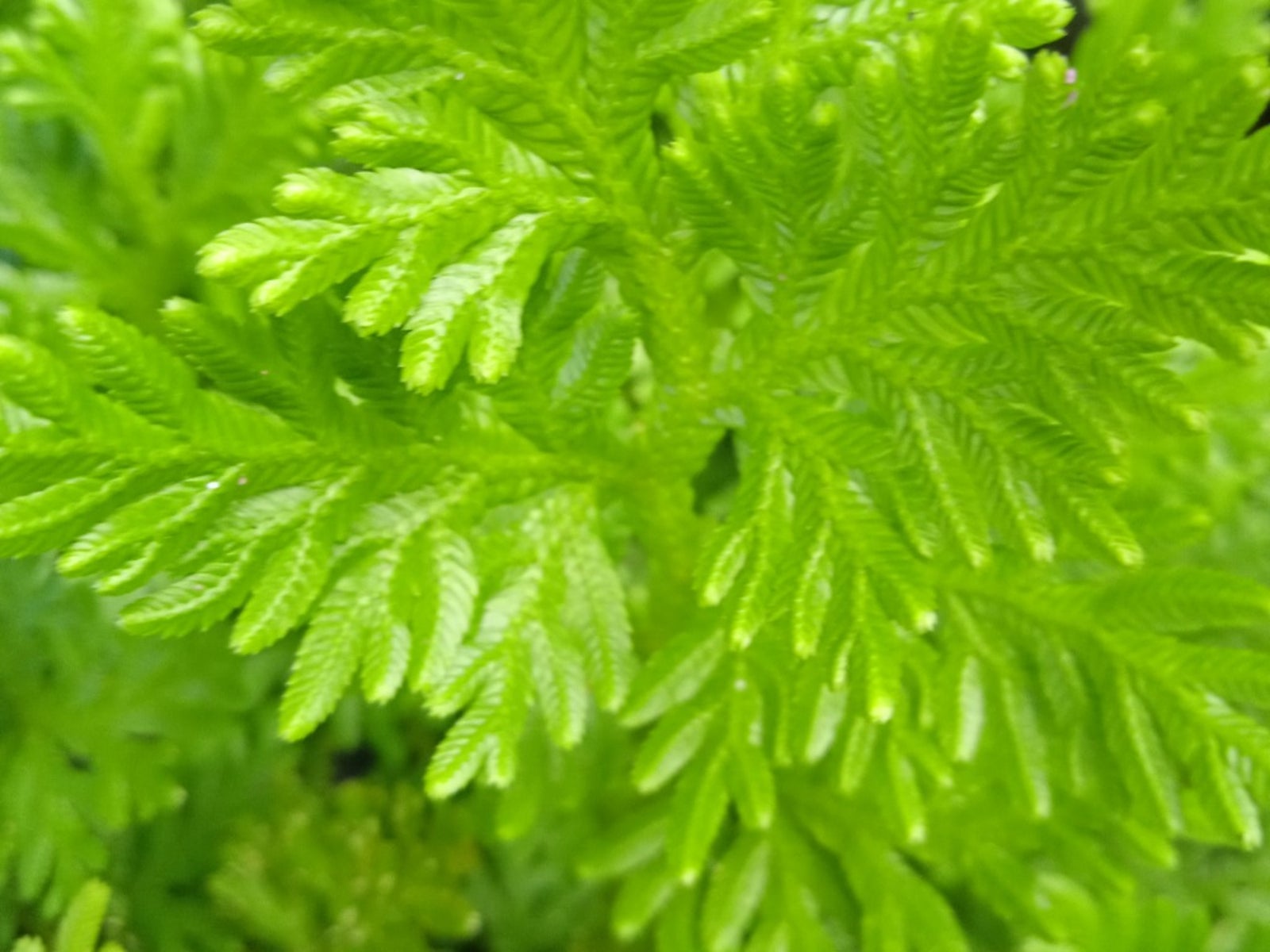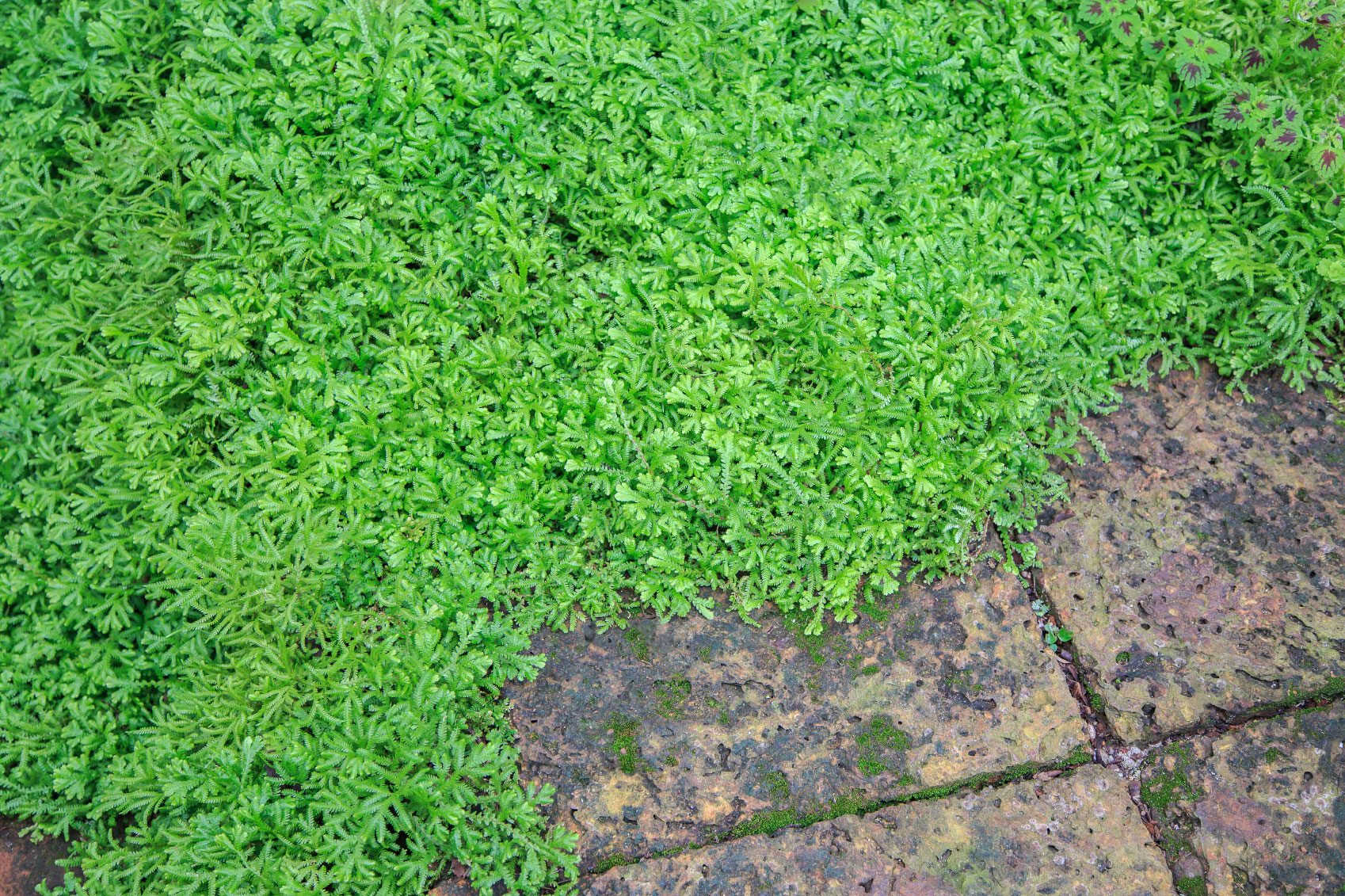What Is A Frosty Fern Plant – Learn How To Care For Frosty Ferns


Frosty ferns are very misunderstood plants, both in name and care requirements. They frequently pop up in stores and nurseries around the holidays (probably due to their wintery name) but many buyers see them fail and die soon after they come home. Keep reading to learn more frosty fern information, including how to grow a frosty fern correctly.
Frosty Fern Information
What is a frosty fern? Common consensus seems to have trouble on this front, because the frosty fern (sometimes also sold as a “Frosted Fern”) isn’t actually a fern at all! Known as Selaginella kraussiana, it is actually a variety of spike moss (which, confusingly enough, isn’t really a kind of moss either). Does any of this matter for knowing how to grow it? Not really. What’s important to know is that a frosty fern is what’s known as a “fern ally,” which means that even though it isn’t technically a fern, it behaves like one, reproducing via spores. The frosty fern gets its name from the distinctive white color of its new growth, giving its tips a frosted appearance. In optimal conditions, it can reach 12 inches in height (31 cm.), but in homes it tends to top out at about 8 inches (20 cm.).
How to Grow a Frosty Fern
Care for frosty ferns can be a little tricky, and gardeners who don’t know a few simple growing requirements are often frustrated by plants that quickly fail. The most important thing to know when growing frosty fern plants is that they need at least 70 percent humidity. This is much higher than the average home. In order to keep your plant moist enough, you’ll need to raise the humidity by keeping it on top of a tray of pebbles and water, or in a terrarium. Frosty ferns actually perform very well in terrariums since they’re small and require little light. Water frequently, but don’t let your plant’s roots sit in standing water. The frosty fern does best in temperatures between 60 and 80 degrees F. (15-27 C.) and will start to suffer in temperatures much hotter or colder. Too much nitrogen fertilizer will turn the white tips green, so make sure to feed sparingly. As long as you treat it right, your frosty fern will grow reliably and beautifully for years.
Gardening tips, videos, info and more delivered right to your inbox!
Sign up for the Gardening Know How newsletter today and receive a free copy of our e-book "How to Grow Delicious Tomatoes".

The only child of a horticulturist and an English teacher, Liz Baessler was destined to become a gardening editor. She has been with Gardening Know how since 2015, and a Senior Editor since 2020. She holds a BA in English from Brandeis University and an MA in English from the University of Geneva, Switzerland. After years of gardening in containers and community garden plots, she finally has a backyard of her own, which she is systematically filling with vegetables and flowers.
-
 Types Of Tomatoes Explained: Explore The Many Wonderful Shapes, Colors, Flavors, & Best Uses
Types Of Tomatoes Explained: Explore The Many Wonderful Shapes, Colors, Flavors, & Best UsesThe world of tomato varieties is vast and fascinating. Learn about the key types to grow in your garden, tailored to your preferences and space.
By Amy Grant
-
 Try The Trend – Turn Any Bed Into A Keyhole Garden With This Clever In-Ground Composter
Try The Trend – Turn Any Bed Into A Keyhole Garden With This Clever In-Ground ComposterKeyhole gardening is an efficient and sustainable practice that saves space. Get started on this DIY project quickly and easily with an in-ground composter.
By Bonnie L. Grant
